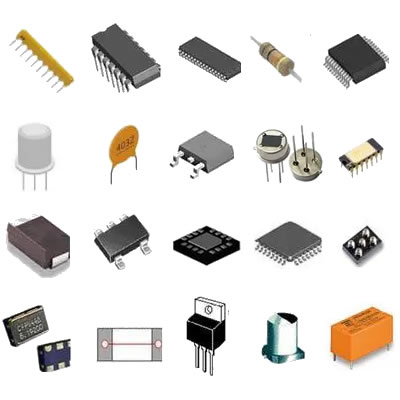What is the market prospects of capacitor manufacturers?
What is the Market Prospects of Capacitor Manufacturers?
I. Introduction
Capacitors are essential components in electronic circuits, serving as energy storage devices that can release energy quickly when needed. They play a crucial role in various applications, from filtering signals in audio equipment to stabilizing voltage in power supplies. The capacitor manufacturing industry has evolved significantly over the years, driven by technological advancements and increasing demand across multiple sectors. Understanding the market prospects for capacitor manufacturers is vital for stakeholders, including investors, manufacturers, and technology developers, as it provides insights into future opportunities and challenges.
II. Current Market Landscape
A. Overview of the Global Capacitor Market
The global capacitor market has witnessed substantial growth, with a market size estimated to reach several billion dollars by the end of the decade. The growth rate is projected to be robust, driven by the increasing demand for electronic devices and the expansion of various industries. Key regions contributing to this growth include North America, Europe, and the Asia-Pacific region, with Asia-Pacific expected to dominate due to its manufacturing capabilities and consumer electronics market.
B. Types of Capacitors
Capacitors come in various types, each serving specific functions and applications:
1. **Ceramic Capacitors**: Widely used in high-frequency applications due to their stability and reliability.
2. **Electrolytic Capacitors**: Known for their high capacitance values, commonly used in power supply circuits.
3. **Film Capacitors**: Valued for their low loss and high insulation resistance, often used in audio and power applications.
4. **Tantalum Capacitors**: Preferred for their compact size and reliability in critical applications.
5. **Supercapacitors**: Emerging as a popular choice for energy storage solutions, particularly in renewable energy systems.
C. Major Players in the Industry
The capacitor manufacturing industry is characterized by several leading players, including companies like Murata Manufacturing, Vishay Intertechnology, and KEMET Corporation. These manufacturers hold significant market shares and are continuously innovating to meet the evolving demands of the market.
III. Driving Factors for Market Growth
A. Increasing Demand for Consumer Electronics
The surge in consumer electronics, particularly smartphones, tablets, and wearables, has significantly boosted the demand for capacitors. As devices become more compact and feature-rich, the need for efficient energy storage solutions has never been greater. Additionally, the rise of smart home appliances and connected devices further drives this demand.
B. Growth in the Automotive Sector
The automotive industry is undergoing a transformation with the rise of electric vehicles (EVs) and hybrid vehicles. Capacitors play a vital role in these vehicles, particularly in energy storage and management systems. Advanced driver-assistance systems (ADAS) also rely on capacitors for their functionality, contributing to the overall growth of the capacitor market in this sector.
C. Expansion of Renewable Energy and Energy Storage Solutions
The global shift towards renewable energy sources, such as solar and wind, has created a demand for efficient energy storage solutions. Capacitors are integral to battery management systems, ensuring optimal performance and longevity of energy storage devices. This trend is expected to continue as more countries invest in sustainable energy solutions.
D. Advancements in Technology
Technological advancements have led to the miniaturization of electronic components, increasing the demand for high-capacitance and high-voltage capacitors. Manufacturers are focusing on developing innovative products that meet the needs of modern electronics, further driving market growth.
IV. Challenges Facing Capacitor Manufacturers
A. Supply Chain Disruptions
The capacitor manufacturing industry faces challenges related to supply chain disruptions, including raw material shortages and geopolitical factors. These disruptions can lead to increased production costs and delays in product delivery, impacting manufacturers' ability to meet market demand.
B. Competition and Pricing Pressures
The market is highly competitive, with low-cost manufacturers entering the space and driving down prices. Price wars can significantly impact profit margins, forcing established manufacturers to innovate and differentiate their products to maintain market share.
C. Technological Challenges
Continuous innovation is essential for capacitor manufacturers to stay relevant in a rapidly evolving market. Additionally, environmental regulations and sustainability concerns are pushing manufacturers to develop eco-friendly products and practices, adding another layer of complexity to their operations.
V. Future Trends in the Capacitor Market
A. Shift Towards Green Technologies
As the world becomes more environmentally conscious, there is a growing shift towards eco-friendly capacitor materials and sustainable manufacturing practices. Manufacturers are exploring recycling and waste management solutions to minimize their environmental impact.
B. Growth of IoT and Smart Technologies
The Internet of Things (IoT) and smart technologies are driving increased connectivity and demand for capacitors. Capacitors play a crucial role in smart grids and smart cities, where efficient energy management is essential. This trend presents significant opportunities for capacitor manufacturers to develop specialized products for these applications.
C. Emerging Markets and Opportunities
The Asia-Pacific region is expected to experience significant growth in the capacitor market, driven by rising consumer electronics demand and increased manufacturing capabilities. Additionally, developing economies present untapped opportunities for capacitor manufacturers looking to expand their market presence.
VI. Strategic Recommendations for Capacitor Manufacturers
A. Investment in Research and Development
To remain competitive, capacitor manufacturers should invest in research and development, focusing on innovative products that meet the evolving needs of the market. Collaborating with technology companies can also lead to the development of cutting-edge solutions.
B. Diversification of Product Offerings
Expanding into new capacitor types and offering custom solutions for niche markets can help manufacturers differentiate themselves and capture new revenue streams. This diversification can also mitigate risks associated with market fluctuations.
C. Strengthening Supply Chain Resilience
Building strategic partnerships and localizing production where feasible can enhance supply chain resilience. Manufacturers should also explore alternative sourcing strategies to minimize the impact of disruptions.
VII. Conclusion
The market prospects for capacitor manufacturers are promising, driven by increasing demand across various sectors, including consumer electronics, automotive, and renewable energy. However, challenges such as supply chain disruptions and intense competition must be addressed to capitalize on these opportunities. By focusing on innovation, diversification, and supply chain resilience, capacitor manufacturers can position themselves for success in the evolving market landscape. Stakeholders must remain informed and proactive to navigate the complexities of this dynamic industry.
VIII. References
1. Market Research Reports on Capacitor Industry Trends
2. Industry Analysis from Leading Market Research Firms
3. Academic Journals on Electronics and Capacitor Technology
4. News Articles on Recent Developments in the Capacitor Market
5. Reports from Major Capacitor Manufacturers on Market Insights and Innovations
This blog post provides a comprehensive overview of the market prospects for capacitor manufacturers, highlighting the current landscape, driving factors for growth, challenges, future trends, and strategic recommendations. By understanding these elements, stakeholders can make informed decisions in this dynamic industry.






